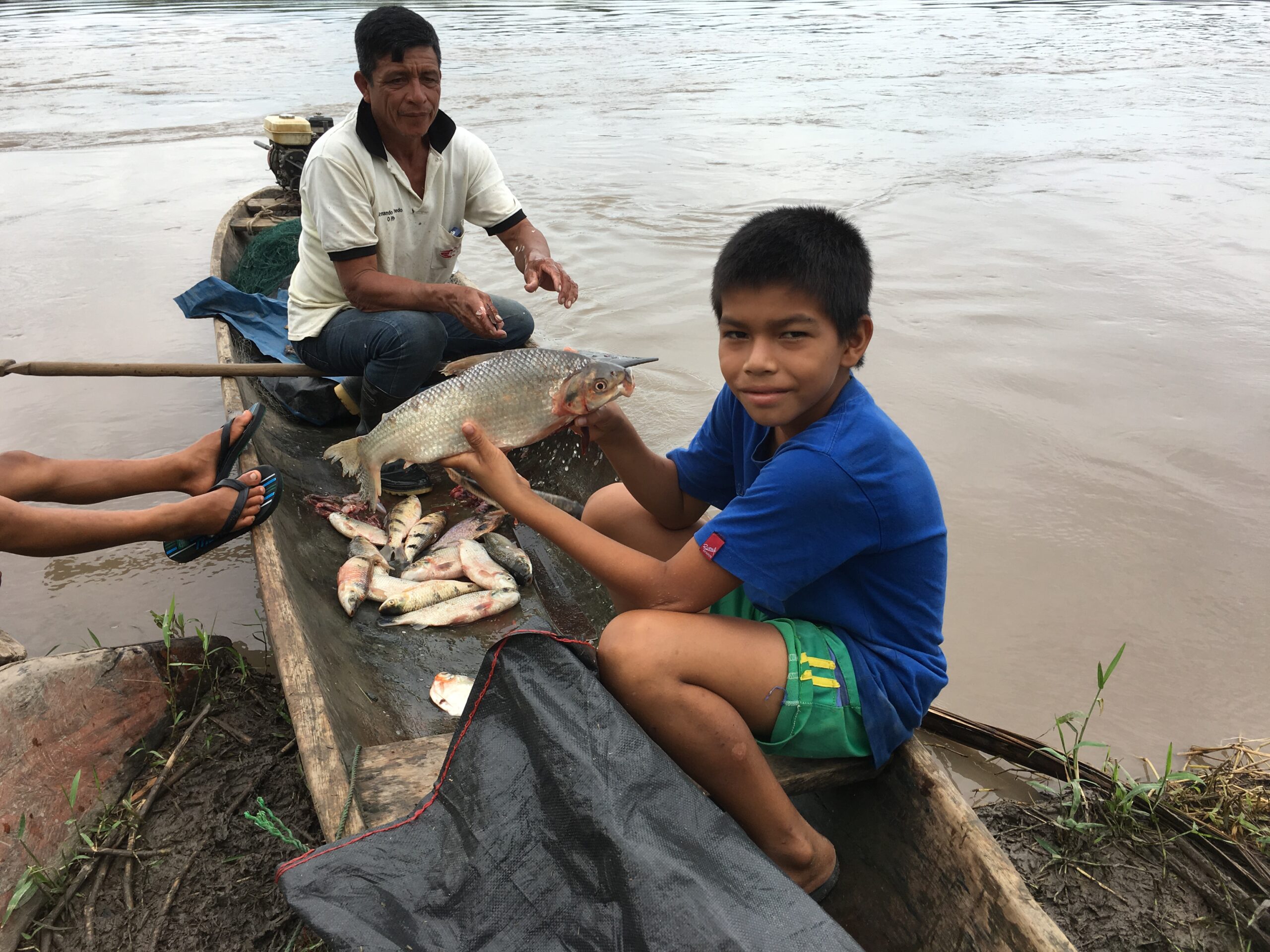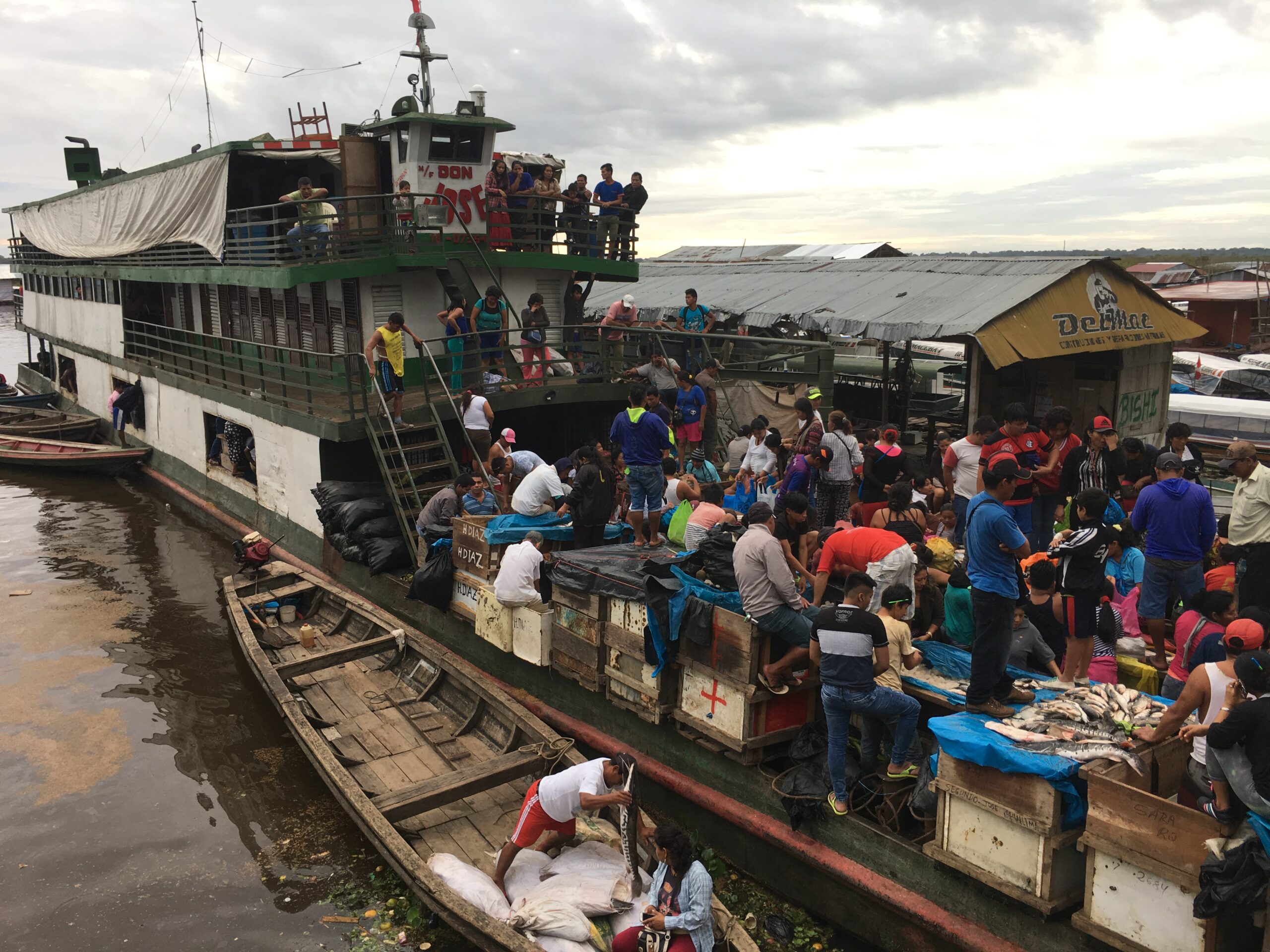- Declining fish diversity in the Peruvian Amazon could affect nutrition for many of the region’s 800,000 people, according to a new study.
- In Loreto region, fishers have been catching fewer large migratory fish species, which are being replaced by smaller fish. Although protein levels are roughly the same, smaller fish contain more omega-3 fatty acids but less iron and zinc, overall—an issue in a region where people already have high rates of anemia and malnutrition.
- Inland communities are already transitioning toward eating more farmed fish and chicken, but these foods may not be an adequate replacement for the range of nutrients these communities get from a diverse diet of wild fish.
- Although this study focused on regional fish, other wild foods such as plants, insects and bushmeat are an important source of nutrition across the globe. Therefore, policies and practices that preserve biodiversity are not only important for conservation but also a means towards greater food security and public health.
As the biodiversity of freshwater fish declines, what does this mean for human nutrition?
Declining fish diversity in the Loreto department of the Peruvian Amazon could affect nutrition for many of the region’s 800,000 people, according to new study published in the journal Science Advances.
In Loreto, people eat fish at least once a day, or about 52 kilograms (115 pounds) of fish per year, and rely on fish as a major source of protein, fatty acids and essential vitamins and minerals such as iron and calcium.
“If fish decline, the quality of the diet will decline,” the study’s senior co-author, Shahid Naeem, director of Columbia University’s Earth Institute Center for Environmental Sustainability told Columbia Climate School. “Things are definitely declining now, and they could be on the path to crashing eventually.”

To assess the region’s fish, researchers set out to the early morning markets. The study’s lead author, then-Columbia Ph.D. student Sebastian Heilpern, visited fishing docks and ports at 3:30 am, as well as two major retail markets in the towns of Belén and Iquitos later in the morning. On those morning excursions, Heilpern and another student bought a few samples of every fish species they could find. In the end, they found 56 out of around 60 of the region’s known food species.
“I like to imagine the field work going a bit like playing Pokemon Go,” Heilpern told Mongabay. “Like any ecological community, catches are dominated by a handful of species and then have a long tail of rare ones, and it quickly came down to getting those rare ones.”
After making his morning purchases, Heilpern shipped the fish on ice to a lab in Lima, Peru where the tissues were analyzed for protein, fat, and minerals. This data was compared to the probability of that species surviving ongoing environmental degradation. The researchers then ran scenarios of how people’s diets would be affected by the loss of specific fish species.
In Loreto, fishers have been catching less large migratory fish species, which are being replaced by smaller fish. Although protein levels are roughly the same, smaller fish contain more omega-3 fatty acids but less iron and zinc, overall—an issue in a region where people already have high rates of anemia and malnutrition.

This begs the question, why can’t people just eat different foods? Inland communities are already transitioning toward eating more farmed fish and chicken, but these foods may not be an adequate replacement for the range of nutrients these communities get from a diverse diet of wild fish.
In another recent study, Heilpern and colleagues found that farmed substitutions can undermine human nutrition, exacerbating iron deficiencies and limiting essential fatty acid supplies. Farming is also harder on the environment, requiring more energy input and generating pollution in a system that is already stressed. Additionally, farmed fish and chicken may cost more.
“Inland fish are fundamental for nutrition in many low-income and food-deficit countries, and of course landlocked countries,” John Valbo Jørgensen, an expert on inland fisheries with the UN Food and Agriculture Organization told Columbia Climate School. “Many significant inland fisheries, including those of Peru, take place in remote areas with poor infrastructure and limited inputs. It will not be feasible to replace those fisheries with farmed animals including fish.”

“I think the main, big-picture message from the paper is how critical diversity in our food supply is for delivering the range of nutrients required for a healthy diet,” said Ruth DeFries, a professor at Columbia University and one of the authors of the study in Science Advances told Mongabay. And that diversity is under threat.
According to the World Wildlife Fund, one-third of global freshwater fish species are threatened with extinction, and 80 species are already known to be extinct, Kevin Krajick reports for Columbia Climate School.
Freshwater biodiversity is threatened by overfishing; dam development, which blocks the passage of large, migratory species; deforestation; and pollution from sources such as agriculture, urbanization, and mining. “Add onto these factors climate change,” Heilpern told Mongabay, “and you have a system that, barring major changes, will be stressed.”
Preserving biodiversity is not only a goal of conservation, Heilpern notes, “but also a means towards sustainable fisheries and food security…Conserving freshwater biodiversity can help achieve aquatic food production and maintain nutrient supplies in places where people are highly dependent on them.”
Ultimately, the researchers say, protecting fisheries will require investing in practices and policies that protect key freshwater habitats, maintain the connectivity of rivers and streams and enact temporary moratoriums on the capture of overharvested species.

Although the study in Science Advances focused on regional fish, other wild foods such as plants, insects, and bushmeat are also an important source of nutrition across the globe, particularly for Indigenous, rural, and low-income urban people.
“Regulations and public health policies need to consider biodiversity’s vital role in sustaining nutritional benefits for over 2 billion people dependent on wild foods across the globe,” the authors write. “Biodiversity is notably absent from global and regional policies linking wild foods with food security.”
“Only when biodiversity is valued alongside harvested biomass and revenue will people be able to secure and sustain the full set of nutritional benefits provided by wild foods.”
Citation:
Heilpern, S., DeFries, R., Fiorella, K., Flecker, A., Sethi, S.A., Uriarte, M., Naeem, S. (2021). Declining diversity of wild-caught species puts dietary nutrient supplies at risk. Science Advances, 7: eabf9967. DOI: 10.1126/sciadv.abf9967
Banner image of boy and fish on the Ucayali River in Loreto Peru by Sebastian Heilpern.
Liz Kimbrough is a staff writer for Mongabay. Find her on Twitter: @lizkimbrough_
FEEDBACK: Use this form to send a message to the author of this post. If you want to post a public comment, you can do that at the bottom of the page.














